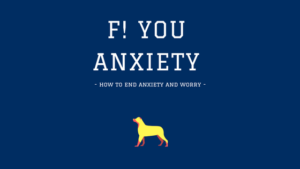Ways To Manage Anger Without Losing Control
It’s important to know that anger is healthy. Anger is an emotion and deserves space in our life.
Why anger is healthy:
We get angry about things that are important to us or situations in which we are treated negatively.
At the same time, it’s important to understand that we can have negative reactions to anger. This in turn leads to anger being viewed as negative.
Let’s consider if a person is trying to study but continues to struggle to focus. Their anger starts as agitation and grows like fire to the point that they throw their books and stop studying. During test day they find themselves struggling to do well due to anger getting the best of them.
Let’s use the character “Bob” in the case study below to focus on healthy anger.
During a counseling session, Bob shared the following with the counselor.
“Last week I was having lunch with some friends. Some new and a few that I really didn’t know well. One girl, there started to be really forward. She was drinking and would put her hand on my shoulder. I tried to talk to her in a respectful way. Yet, a few minutes later she put her hand on my thigh. It felt uncomfortable and like she was crossing a boundary. At that point, I removed her hand and directly told her that I didn’t feel comfortable with what she just did. She responded by telling me, why was I yelling at her and that she didn’t understand how it was a problem.”
In the case study prior about “Bob” hopefully you can pinpoint that the person he was with crossed a boundary by physically invading his space even after being told to stop.
Bob did a great job by providing the person with direct feedback on his comfort level. Bob during the counseling session shared that he felt angry because the person crossed his boundary, invaded his space, and showed little respect towards him due to not listening.
This is a great example of how anger is an important emotion. It is up to us to take time to understand how it lives inside us and how it comes out.
To develop a healthy practice with anger, take time to write down what makes you feel angry. Focus on areas that connect to your comfort level, boundaries, respect, and values.
Common healthy reasons to experience anger:
- Racial discrimination.
- Your personal space being invaded.
- You are being attacked.
- Labeling.
- Physical attack.
- Shaming.
- Abusive Language.
Now that you have a strong understanding of your healthy triggers, let’s focus on healthy responses.
Common triggers for anger include:
Receiving an insult. This typically does not feel good and can right away cause walls to go up and a need to attack the other person.
Conflict. Some people are triggered by conflict. For instance, you may experience rapid heart rate when in a situation of conflict.
Skipping meals. This can lead to a decrease in sugar which tends to make a person feel jittery and on edge. At times people will use the term “Hangry”.
Financial challenges or concerns. Such as growing up in poverty and feeling triggered when the bank isn’t at what you want it to be or when your partner spends money.
Ongoing stress. Most people experience stress on a day-to-day basis. When a person does NOT engage in stress-reducing exercises then the stress accumulates and can lead to a stronger level of anger.
Unresolved trauma or difficulties in life. For instance, if a person experiences a life event such as bullying and has not reached a space of healing. They may find themselves experiencing anger during an event such as that when playing a game with friends and not being included. The anger comes up because the act of not being included reminds the person of bullying. So in this case, the unresolved trauma or difficulty in life directly triggers in the present moment.
Being lied to. It’s natural to experience hurt or even frustration when dishonesty takes place. Yet, it’s important to have a healthy reaction versus an unhealthy one.
When someone interrupts you or talks over you. Honestly, this doesn’t feel good. It can make a person feel that they do not matter.
Entering your personal space. An example of this would be if someone touches you when you do not want to be touched or basically crosses a boundary. The act can lead to your walls going up simply because your space is being entered.
As you focus on healthy responses consider what you can do to navigate the trigger that leads to anger in a manner that is constructive and positive. The goal is not to remove anger. Instead, it’s to experience anger in a manner that does not cause destruction in your life or those around you.
Below are two examples for a healthy response to anger:
Internal validation.
This is the process of giving yourself space to acknowledge that it’s okay for you to feel the way that you feel.
Let’s use “Bob” as an example. Bob shared the following:
“On the way home I stopped at a gas station. The line was longer than normal. The person behind me kept yelling at what I think was his partner. He was being rude and demanding. Watching and hearing that really made me angry. I wanted to just punch him. During that moment, I took a deep breath and simply reminded myself that it’s okay for me to feel the way that I do.”
Think about your life. What can you do to practice internal validation?
Assertive communication.
Directly share with the person your feelings and needs. Let’s use “Bob” as an example.
Bob shared that while working his co-worker was being very disruptive by having loud videos playing. Bob walked up to his co-worker and asked him if he could speak with him in private. During the conversation, Bob used assertive communication by sharing, “I am having a hard time focusing on our team’s project with the videos playing in the background. Would you be willing to use headphones? You are welcome to borrow mine.”
Assertive communication includes:
- Sharing thoughts and feelings in a healthy manner.
- Using eye contact.
- Maintaining the physical body in the direction of the person you are speaking with.
- Using a strong and even tone.
- Using the “I statement” to strengthen the message. Such as “I feel distracted with the loud noise in the background. Would you do me the kindness to lower it so that I can focus on my work?”
As you walk away from this reading, take with you a therapeutic homework assignment. This homework is centered on building self-love. When a person experiences challenges in life, there tends to be an increase in symptoms like worry, doubt, and sadness.
Self-love.
Practicing self-love helps to reduce negative symptoms and make it easier to challenge difficult moments.
Instructions: For 60 seconds reflect on all the reasons you are proud of yourself with a specific focus on situations or experiences you have overcome.
Examples:
“I am proud of myself for being able to share my presentation in front of everyone at work. I was nervous and still found the strength to follow it through.”
“I am proud of myself for waking up and trying each day.”
Healthy coping skills
Coping skills are the tools that work to help you navigate anger and live your best life. They range in effectiveness and fit. Some coping skills are fit for certain triggers or for certain difficult anger-driven moments.
There are coping skills that are used at the moment while others are used daily and become part of a person’s lifestyle.
To manage anger, It’s important to have a combination of ready-to-go coping skills and daily coping skills that you can use. I like to think about coping with anger like the practice of going to the gym. It would truly be ineffective to only visit the gym when a person feels out of shape. Though the person would feel positive while at the gym, there would not be sufficient space to allow growth to take place.
Great coping skill is grounding. This exercise starts by giving yourself 3 minutes 2 times per day.
The goal is to focus on identifying categories based on topics or themes for the duration of two minutes. The last minute is for you to create a supportive affirmation as you enter life. Examples for themes or topics include identifying animals with four legs, fast cars, destinations that are tropical, and more.
An example for this exercise starts with “Bob” focusing on animals that have four legs for a period of 2 minutes.
Next, Bob spends 1 minute focusing on the affirmation, “I am strong and fully capable of taking on what life gives me. I will jump back into life by giving myself and others 5 acts of kindness.”
I hope that you found this reading helpful. I want to share a few more supportive reads that can help with anger management.
Resources To Help With Anger Management
The book, Tools of Titans, is based on gaining supportive resources from varying perspectives. The auhtor does an amazing job of providing readers with information that can be applied. Everything from learning calming practices to improving sleep. You are able to start from the beginning or skip between chapters based on what you are searching for. CLICK HERE to check it out and see what the book is all about.
A weighted blanket is a blanket that one can purchase to use for varying needs. The weight of the blanket depends on the size and even the needs of a person. For instance, a person that struggles with anxiety or anger may find that the weight of the blanket provides a calming sense.
The weighted blanket can provide a sense of pressure which works to relieve the bad or unwanted symptoms. The symptoms that can be reduced include restlessness, worry, feeling on edge, unwanted movement, and more.







